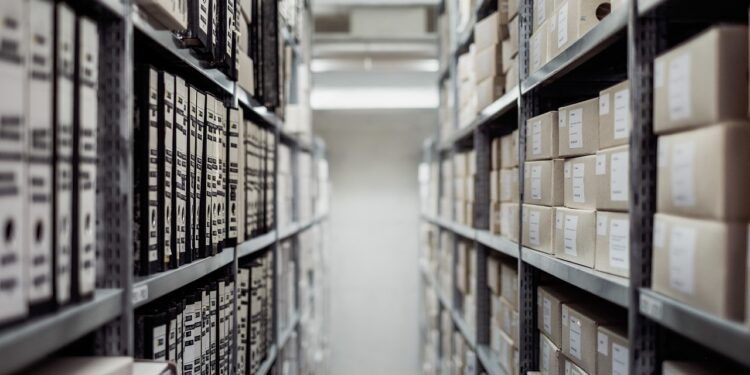How to Find the Perfect Warehouse for Rent to Fit Your Business Needs


Looking for a warehouse for rent? It might sound straightforward at first, but with so many factors to consider, it can feel a little overwhelming. A good warehouse isn’t just a storage space—it’s an essential part of your business operations. Whether you’re expanding, starting fresh, or shifting strategies, choosing the right space can save you time, money, and headaches. So, how do you find the perfect match for your business needs?
Table of Contents
Understand Your Storage and Operational Needs
Before you start scrolling through listings, take a step back and think about your business’s unique requirements. What are you storing? How much space do you realistically need? It’s tempting to go for the biggest space available, but too much unused square footage means wasted money.
Think about:
- Size – How much inventory do you have now, and how much do you expect to need in the future?
- Layout – Do you need open floor space, shelving, or specialized sections for different types of goods?
- Access – Will you require loading docks, multiple entry points, or forklift accessibility?
- Climate control – If your products are temperature-sensitive, this is a must-have.
Jot these requirements down. This list will help you filter out spaces that don’t meet your needs from the start.
Location Matters More Than You Think
When it comes to choosing a large warehouse for rent, location isn’t just about being close to home. Your warehouse’s location affects shipping costs, delivery times, and even how convenient it is for your employees to commute.
Here’s what to keep in mind:
- Proximity to suppliers – A warehouse near your vendors can speed up restocking and cut transportation costs.
- Customer base – If you ship directly to customers, being close to your key markets can improve delivery times and reduce shipping expenses.
- Transport links – Easy access to highways, ports, or airports can make all the difference for logistics.
- Zoning laws – Make sure the warehouse is located in an area that’s legally approved for your intended use.
If you’re unsure about the ideal location, try mapping your suppliers and customers to identify an efficient midpoint.
Budget: Balancing Costs and Value
It’s easy to focus on the monthly rent, but the true cost of a warehouse goes beyond that number. Make sure to factor in additional expenses like utilities, maintenance, taxes, and insurance. A space with a lower base rent might actually cost more in the long run if it’s inefficient or poorly maintained.
Look for a warehouse that balances cost with value. For instance:
Are utilities included in the rent?
Is the space move-in ready, or will you need to invest in renovations or upgrades?
Are the utilities and building systems energy-efficient, potentially saving you money over time?
It’s also worth asking if the landlord offers flexible lease terms. Businesses evolve, and committing to a long-term lease on a warehouse that no longer suits your needs could cause problems down the road.
Inspect the Space in Person
A listing might look perfect on paper, but don’t sign anything until you’ve inspected the warehouse in person. Photos and descriptions can only tell part of the story.
When you visit, pay attention to details like:
- Condition of the building – Look for leaks, cracks, or signs of neglect that could lead to costly repairs.
- Security – Check for cameras, locks, and other security measures to protect your inventory.
- Infrastructure – Are there enough electrical outlets? Is the plumbing functional? Does the Wi-Fi signal reach throughout the building?
- Loading areas – Evaluate whether loading docks, ramps, or doors are suited to the types of vehicles you use.
Don’t hesitate to ask questions during your visit. A good landlord should be able to address any concerns and clarify what’s included in the lease.
Flexibility for Future Growth
Your business may be small now, but what happens if your operations double in size next year? Planning for growth is a smart move when choosing a warehouse.
Consider these questions:
Can the space accommodate additional shelving or equipment if needed?
Is there room for expansion, or would you need to move entirely?
How flexible is the lease in case you outgrow the space?
Choosing a slightly larger warehouse than you need today can save you the hassle of relocating later. Just be cautious about overcommitting to too much space if growth isn’t guaranteed.
Don’t Overlook Safety and Compliance
Workplace safety is critical, and your warehouse must meet all necessary regulations. Ignoring this step could lead to fines, legal trouble, or even accidents.
Make sure the warehouse:
- Complies with fire and safety codes, including sprinklers, fire extinguishers, and clear exits.
- Meets any industry-specific regulations, such as food storage guidelines if applicable.
- Has proper lighting, ventilation, and emergency systems in place.
If in doubt, consult with a safety expert or building inspector before making a commitment.
Negotiating the Lease
Once you’ve found a warehouse that ticks all the boxes, it’s time to negotiate the lease. This step can feel daunting, but it’s worth taking the time to get the terms right.
Some key points to discuss:
- Lease length – Does the landlord offer short-term leases if you’re unsure about long-term needs?
- Renewal options – Can you lock in favorable terms for future renewals?
- Maintenance responsibilities – Clarify who is responsible for repairs and upkeep.
- Rent increases – Make sure the lease specifies how and when rent might increase.
Don’t be afraid to negotiate. A fair landlord will want to work with you to create a lease that benefits both sides.
Ready to Make Your Move?
Finding the perfect warehouse for rent can feel like a big task, but with a clear understanding of your needs, it’s absolutely manageable. By focusing on what’s most important to your business—location, cost, flexibility, and safety—you’ll set yourself up for success.
Take your time, do your research, and trust your instincts when inspecting and negotiating. After all, this warehouse is more than just a building; it’s a cornerstone for your business’s growth and efficiency. Choose wisely, and your operations will thank you for it.






